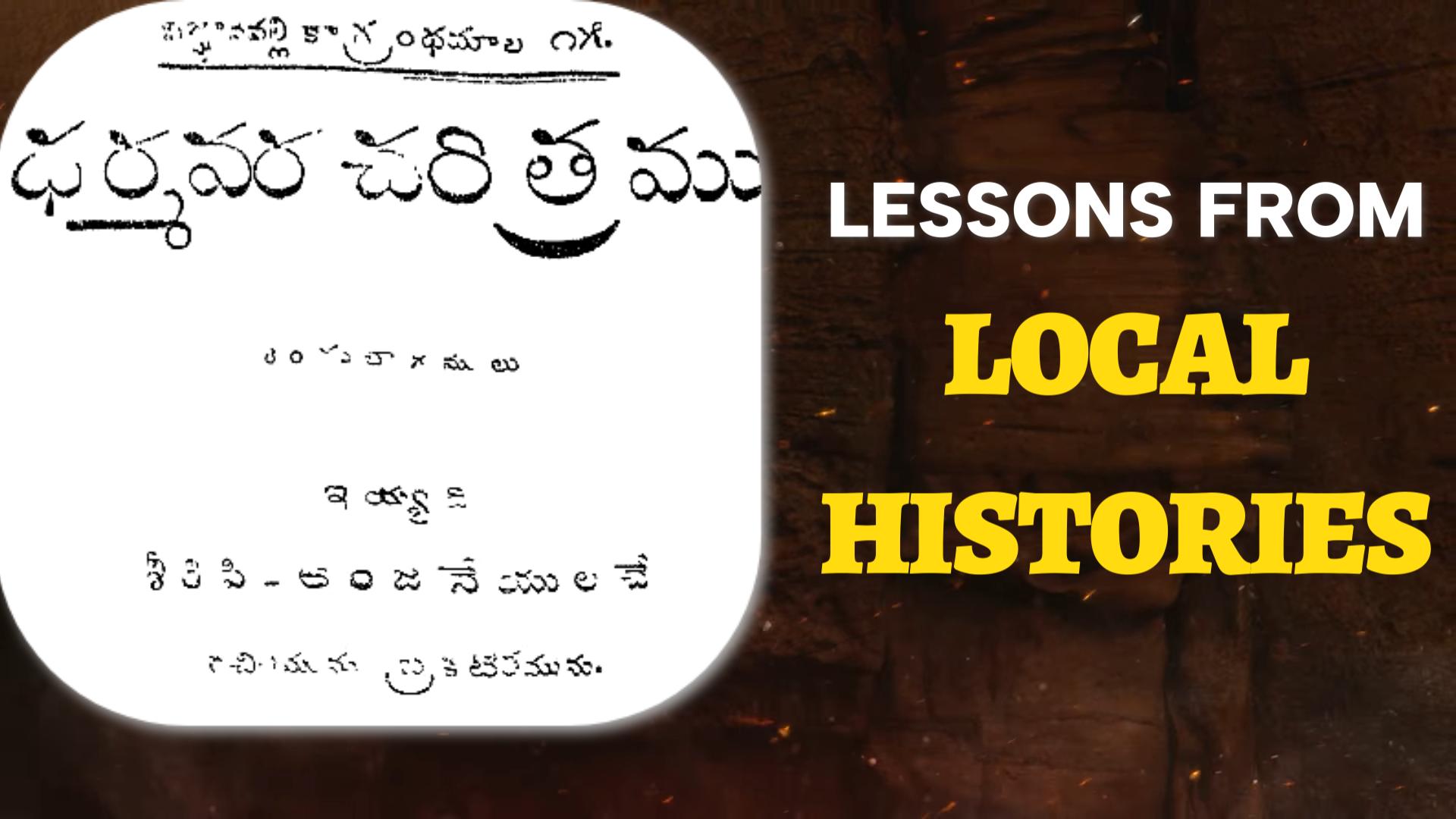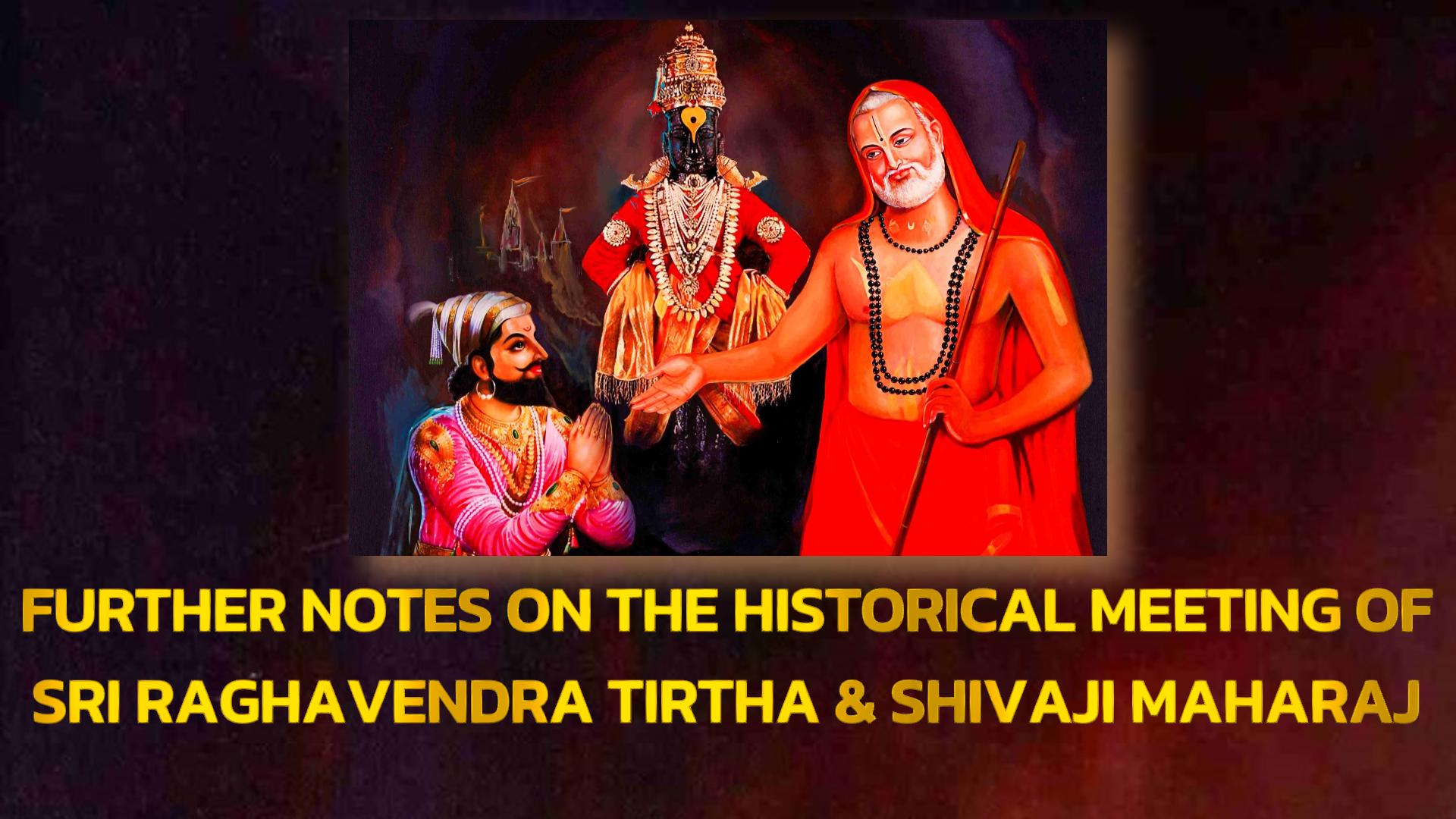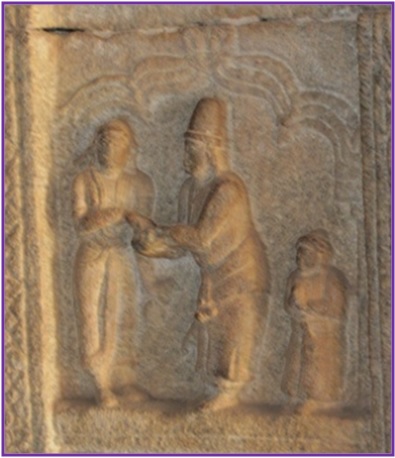SRI VYASATIRTHA’S ASSOCIATION WITH TIRUMALA TEMPLE – REVIEW OF DOUBTS RAISED BY SADHU SUBRAHMANYA SASTRI – PART 3
In the previous article, I have explained about the incidents of thefts in Tirumala temple, types and cadres of people involved and how to understand the hidden purport of Sripadaraya’s glory by reading between the lines of Krishnadevaraya’s inscription at Govindaraja Temple, Tirupati.
In this last and final part of this series, I wish to draw the attention of readers towards the following moot points:
- Was Sripadaraya unknown to the public at large and to Saluva Narasimharaya?
- If Sripadaraya was well known to the public and the emperor, what were the reasons?
- How Lakshminarayana Tirtha became ‘Sripadaraya’? And whether this title got to do something with our present pursuit of dismissing the doubts raised by Sadhu Subrahmanya Sastry on Maadhva narratives of Sripadaraya and Vyasaraya?
Let me tackle the questions in the same order of their appearance.
-
Was Sripadaraya unknown & If popular on what grounds?
This is a pretty archetypal question that attracts different answers from different quarters. Dvaitins say “Oh! Yeah! He was pretty much known to everyone in the world!” and Advaitins say “He was oblivious to the public and royals as compared to our Gurus!”
So, instead of falling prey to any of these rhetoric let me first put forward the proof.

(taken from Maadhva Mathada Shashanagalu, Published by SRS Matha, Mantralaya)
Above is an inscription pertaining to late 15th century (1496 AD) and was issued by one Devapa who was a temple manager/trustee of Narasimhadeva temple to one Alapa for digging a tank. This inscription has been found installed in a Venkateshwara temple located in Kurijili village, Punganur Taluk, Chittoor Dist of Andhra Pradesh.
The most intriguing part of this inscription is in the last portion of it which reads as below:

(Maadhva Mathada Shashanagalu, Published by SRS Matha, Mantralaya)
The issuer or donor of this grant takes oath on the lotus feet of “ಮುಳವಾಗಿಲ ಕಲಮಠದ ಲಕ್ಷ್ಮೀನಾರಾಯಣ ತೀರ್ಥ ಶ್ರೀಪಾದವೊಡೆಯರು” which unmistaken pointer towards Sri Sripadaraya of Mulbagal.
Before I proceed to further ruminations of this inscription, I wish to quote the unchanged version of this inscription from an external source:
To read the general intro to the inscription:
To read the name of Sri Lakshminarayana Tirtha:
The above online version will take away any doubts developed by anyone that the inscription quoted from SRS Matha’s book may have been a ‘creation’ by Maadhvas.
FURTHER ANALYSIS OF SRIPADARAYA’S INSCRIPTION
Now, having the authenticity of the inscription established, I will proceed to explain further reflections of this inscription.
- As per the timelines of Sripadaraya (1404-1502) we can understand that this inscription has been issued barely six years before the Brindavana pravesha of Sripadaraya.
- At the time of this inscription, Sripadaraya was of 92 years.
- This inscription confirms the fact that Sripadaraya was well known to the general public (even at an advanced age of 92) and he was being revered and respected by the people.
Another important inference that must be drawn from this inscription is that he has been addressed by his original pontifical name (Ashrama Nama) i.e. Lakshmi Narayana Tirtha. The additional prefix of “Sripada Odeyar” is synonymous to Sripadaraya and speaks volumes about his popularity in clear terms.
With the help of Kurijili village inscription, we can conclude Q No. 1 & 2 that Sripadaraya was well known to the general public and was popular enough that villagers too have mentioned in his name in their edicts.
Now, dealing with the second part of the 2nd question.
2. Was Sripadaraya known to Saluva Narasimharaya.
To support this fact, there are no concrete evidences such as the above mentioned inscription. So, going by the thumb-rule used to read Krishnaraya’s inscription i.e. ‘reading-between-the-lines,’ we can assume that a saint whose popularity is spread far and wide will never go unnoticed by the rulers. In that sense, Sripadaraya who was quite popular with the masses must have been known to the ruler as well.
Another generic fact is that Saluva Narasimha has been the Governor of Chandragiri Rajya and was ruling from Chandragiri town which is around 150 KMs (as per modern driving distance) from Mulbagal. Even in those days, 150 KMs would not have alienated a popular saint from the ruler of the land!
Incidentally, Mulbagal happens to be the gateway to Tirupati holy land for the people coming from other parts of Karnataka. The very name “Mulabagal” is deciphered as “ಮೂಡಲ ಬಾಗಿಲು” i.e. Eastern Gateway [to Tirumala Kshetra]. Thus, a popular saint who seated himself in the precinct of a grand trunk road that connects the mainland of the kingdom to a great pilgrim destination can never go unnoticed by the rulers of the surrounding provinces. Hence, Sripadaraya must be known to Saluva Narasimha right from his governership days.
Other reasons such as Sripadaraya’s penchant for writing devotional songs in colloquial language (Kannada) have definitely made him to become a household name. His kirtanas on God Venkateshwara stand great testimonies to his frequent visits to Tirumala shrine as well.
As he was seated in the town known as Eastern Gateway to Tirumala, Sripadaraya must pass through Chandragiri town to reach Tirumala temple. This assumption gives a scope to understand that there could have been personal interactions between the ruling governor (Saluva Narasimha) and the popular saint (Sripadaraya). Anyways, these are my postulations only and can’t be firmly established with archeological or epigraphic documents.
By and large, we can understand that owing to his Kannada kirtanas and for other allied reasons, Sripadaraya was well known to the public at large and thereby must be known to Saluva Narasimha Raya too.
Turning the attention towards trivial question of “who gave the title Sripadaraya to Lakshminarayana Tirtha?” let me present my studies on this.
There is a story in vogue that Sri Raghunatha Tirtha of Uttaradi Matha conferred this title as an acknowledgment of scholarly attributes of Lakshminarayana Tirtha (LT) and also as a token of his appreciation towards a genius called LT.
This account has been disputed and debated by many scholars in the past but without arriving at a common consensus. I do not think that my presentation too may not bring in the much required agreement between UM followers and those who discard their story.
My studies reveal that the story supported by UM does not stand ground when the archeological and scriptural evidences are compared with the essence of the title. Hereunder is the point-wise analysis of the said case.
- The title Sripadaraya means King amongst Saints.
- This clearly hints that there must have been some ‘kingly’ traits in the person who received the title i.e. Lakshminarayana Tirtha.
- It is a well known belief amongst Maadhvas that Sripadaraya is the incarnation of Dhruva who was born to a great king called Uttanapaada and ruled the earth for sixty thousand years.
- This Puranic evidence confirms that LT is indeed was a ‘royal king’ in his root form (mUla rUpa) and hence gets qualified to be called as King of the Saints.
If someone does not want to believe these Puranic accounts as they being ‘mythical’ in nature, I wish to present archeological evidence supported by few more visual testimonies about the ‘kingship’ of LT.
Firstly, take a look at the below image:

I have taken this image from a friend’s Facebook wall who stated that this photo has been taken in Mulbagal Matha. He found this image of a saint with royal insignia sitting along with another saint [not seen here] who was sitting next to him.
The above image is undoubtedly of Sripadaraya as it is having all the traits of a Sanysin i.e. Jnanamudra, Ardha Padmasana, Dandakashtha and without Yagnopavita. Another important proof to prove that this carving is of Sripadaraya’s is the song written by Vyasatirtha i.e. “ಮಹಿಮೆಸಾಲದೆಇಷ್ಟೆಮಹಿಮೆಸಾಲದೆ”
In this kirtana, Sri Vyasatirtha describes Sripadaraya in eloquent terms that befit the guise of a king “ಮುತ್ತಿನಕವಚಮೇಲ್ಕುಲಾವಿನವರತ್ನಕೆತ್ತಿದಕರ್ಣಕುಂಡಲ” and also that of a saint “ಕಸ್ತೂರಿತಿಲಕಶ್ರೀಗಂಧಲೇಪನ”. Thus the image found in Mulbagal Matha is that of Sripadaraya only and not that of any other king or a mythological character.
Here, the moot question that puts UM’s story to fall flat is “whether a sanysin (Raghunatha Tirtha) offer royal insignia such as the crown and ear rings to another sanysin (LT)
I feel that no sanysin can ever offer and never offered so far the royal insignia that are seen in Sripadaraya’s stone carving. So far, I have not come across with such strange occasion wherein a Madhva saint presented jewels and ornaments including a crown! Should there be/been such a case, I will be much obliged to update my knowledge.
Getting back to the question as to who could have conferred the title to Lakshmi Narayana Tirtha? In my opinion it must have been awarded by Saluva Narasimha himself. But how do this assumption become a trustworthy fact?
To know this, let us revisit the stone carving of Sripadaraya:
Take a close look at the crown wore by Sripadaraya. It is of cylindrical or vertical in shape with a tapering top (Sl.No. 1) and has two ornamental strips running from top to the brim of the crown (Sl.No. 2). Let us compare this crown with that of the one usually seen on Vijayanagara emperors:
This is the statue of Krishnadevaraya installed by himself in Tirumala temple. Now, take close look at the design of Krishnaraya’s crown and compare both the crowns of Sripadaraya and Krishnaraya. Here is composite image of them:

Aren’t they looking similar?
For me they appear to be the same. Every detail and design aspect of those two crowns are identical in nature. These crowns are typical design of Vijayanagara emperors. I could not get hold of the image of Tirumala Raya’s statute which can be seen on the other side of Krishnaraya’s which also bears similar crown.
I also wish to present the stone carvings of Annamacharya and his son Peda Tirumalacharya (Tirumalayya) found in Tirumala temple which also bear strikingly similar crowns:
Both Annamayya (c.1408-1503) and his eldest son Tirumalayya belong to Vijayanagara period and in Tirumala temple there are couple of inscriptions issued by Peda Tirumalayya which belong to mid 16th to late 16th century. Thus, we can understand without much doubt that the crown wore by Sripadaraya in Mulbagal stone carving is definitely belonging to the Vijayanagara style.
Hence it becomes apt to understand that Saluva Narasimha must alone has presented the crown(ಕುಲಾವಿ), gem-studded earrings (ರತ್ನಕೆತ್ತಿದ ಕರ್ಣಕುಂಡಲ) and the armor made with pearls (ಮುತ್ತಿನ ಕವಚ). It becomes even more appropriate to understand that the conferment of such royal ornaments has led Sri Vyasatirtha to eulogize his Guru in eloquent terms and thereby Sri Lakshmikantha Tirtha became Sripadaraya or Sripada Odeyar (as stated in Kurijili inscription of 1496).
It must be recalled here that though Sri Vyasaraya sat on Vijayanagara throne, he never wore a crown or earrings or any such kingly ornament(s). So far no artist, old and contemporary, has ever drawn Sri Vyasaraya donning a crown as he sat on Karnataka Simhasana. This striking dissimilarity between two great saints of Maadhva parampara who sat on the thrones of Chandragiri and Vijayanagar respectively educates the supporters of UM’s about their failure to understand the subtler aspects of historical accuracy.
I am also rest assured now that the shloka of Sripadarajasthaka is quite accurate in giving information about the royal faliciation received by the great Saint. Actually, that could have been the only befitting occasion during which Saluva Narasimha gave away those fantastic kingly embellishments to Lakshminarayana Tirtha which made the Sripada to get eulogized by the admirers as “Sripadaraya” the King of Ascetics.
CONCLUSION
With all these epigraphic, archeological and scriptural evidences I conclude that the doubts raised by Sadhu Subrahmanya Sastri on the authenticity of the life accounts of Sripadaraya and Vyasaraya can be answered emphatically. Also, the story propagated by Uttaradi Matha on the conferment of Sripadaraya title can be easily refuted on the basis of strong material evidences.
I am resting this pursuit at this point and would return to the topic, should there been new set of doubts/counters or any other astonishing facts that lay hidden in the dark belly of Maadhva’s ignorance towards their own history.
-Swasti-







